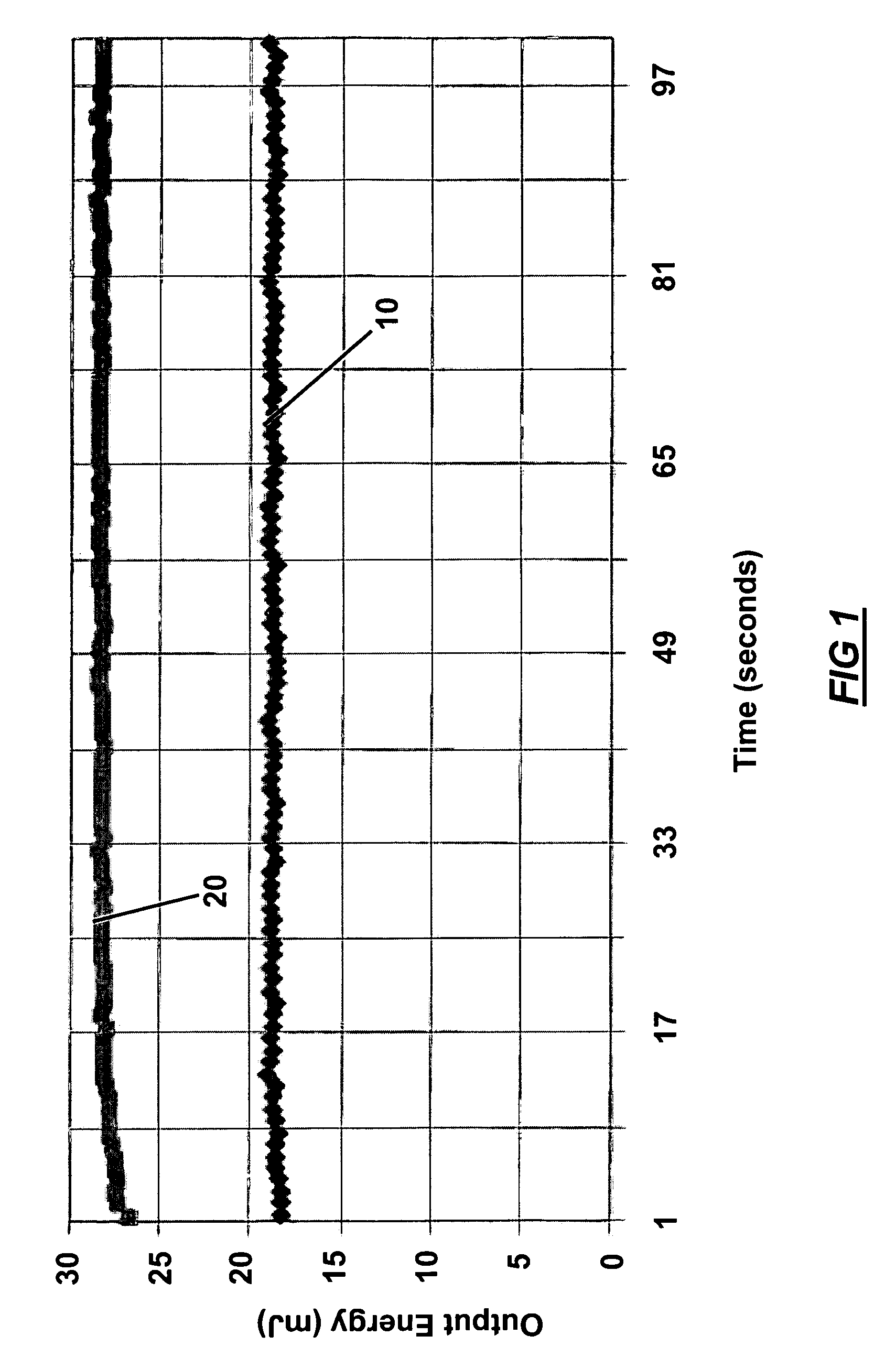Ytterbium-phosphate glass
a technology of phosphate laser glass and phosphate, which is applied in the direction of laser details, lasers, active medium materials, etc., can solve the problems of devitrification of the melt, crystal formation within the resulting glass, and the inability to increase the concentration of lasing ions to increase the absorption of phosphate, etc., and achieves high levels of ytterbium
- Summary
- Abstract
- Description
- Claims
- Application Information
AI Technical Summary
Problems solved by technology
Method used
Image
Examples
Embodiment Construction
[0012]As discussed above, typically in formation of a laser glass a base glass melt is prepared and then to this base glass are added a sensitizing element, a lazing ion, and any solarization protectants. When this process is followed the practical limit on incorporation of ytterbium is approximately 8 mole percent. As noted this limits the shortness of any lazing element and reduces the output available from a lazing glass doped, for example, with erbium.
[0013]In a departure from tradition laser glass forming practice the present inventor set out to determine if a laser glass could be made with higher levels of ytterbium while preventing crystal formation and devitrification of the resulting glass. The present inventor discarded past practice and chose to start with a phosphate-ytterbium base glass to see if this would allow for a larger incorporation of ytterbium and produce a useful laser glass. To his surprise the inventor discovered that a phosphate-ytterbium base glass could b...
PUM
| Property | Measurement | Unit |
|---|---|---|
| path length | aaaaa | aaaaa |
| absorption length | aaaaa | aaaaa |
| weight percent | aaaaa | aaaaa |
Abstract
Description
Claims
Application Information
 Login to View More
Login to View More - R&D
- Intellectual Property
- Life Sciences
- Materials
- Tech Scout
- Unparalleled Data Quality
- Higher Quality Content
- 60% Fewer Hallucinations
Browse by: Latest US Patents, China's latest patents, Technical Efficacy Thesaurus, Application Domain, Technology Topic, Popular Technical Reports.
© 2025 PatSnap. All rights reserved.Legal|Privacy policy|Modern Slavery Act Transparency Statement|Sitemap|About US| Contact US: help@patsnap.com

